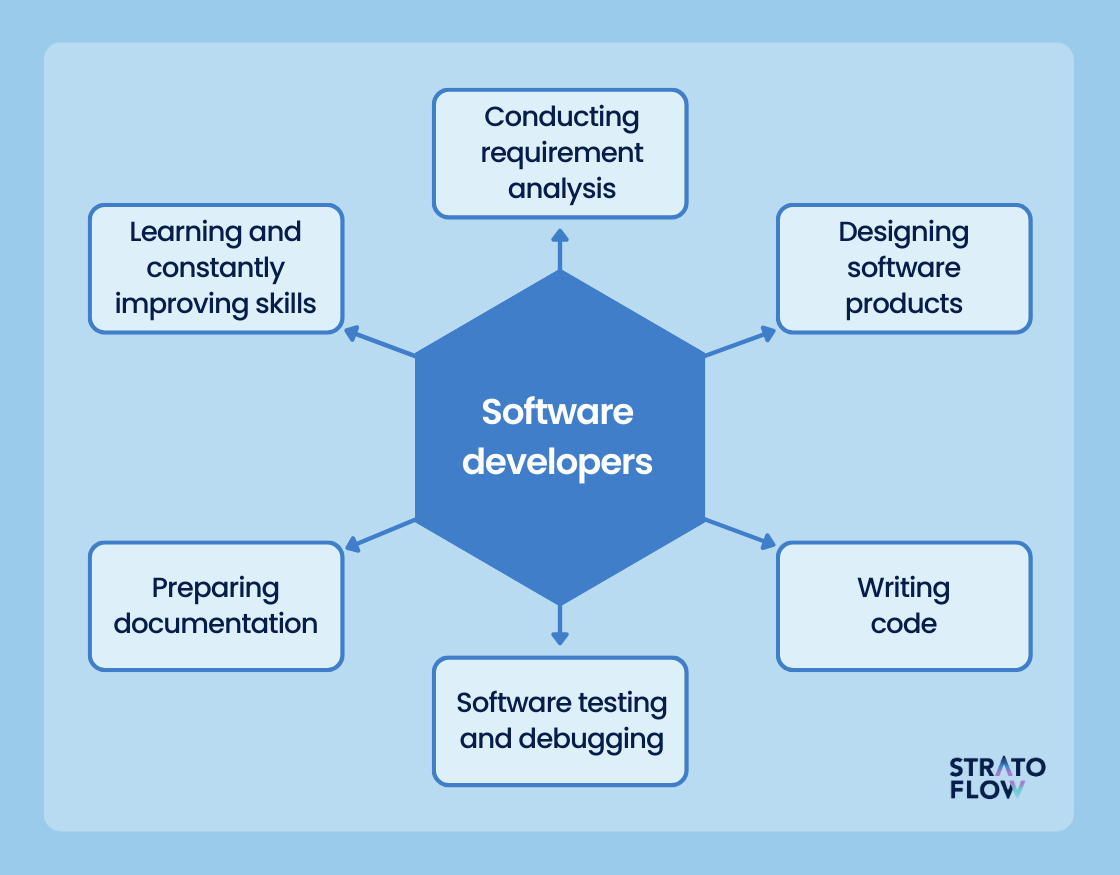Dedicated Developers vs. In-House Teams: Which Is Right for You?
The choice in between utilizing specialized designers and keeping an internal team is a considerable one that can influence the trajectory of your projects and total organization method. Dedicated designers supply a degree of flexibility and customized experience that can be beneficial for certain, temporary initiatives. Conversely, internal groups add to a natural business society and a nuanced understanding of long-term goals. By taking a look at crucial variables such as budget, task range, and wanted control, you can better determine which technique straightens with your business needs. The ramifications of this selection expand beyond immediate results-- think about the more comprehensive influence on your service landscape.
Recognizing Committed Programmers
The expanding demand for specialized abilities in the technology sector has resulted in the development of dedicated designers as a sensible remedy for lots of organizations. These professionals are generally contracted on a project basis, permitting business to take advantage of particular competence without the long-term dedication related to full-time hires. Committed programmers are frequently ingrained within a client's group, giving versatility and scalability to fulfill job requirements.
This design allows organizations to access a worldwide skill pool, which is particularly useful in a swiftly evolving technical landscape. Dedicated designers can be sourced from various geographical areas, making sure that business can locate the appropriate skill set at competitive rates. They typically bring a wealth of experience and expertise, having serviced diverse projects throughout various industries.
Additionally, committed developers can concentrate solely on the jobs handy, enhancing performance and efficiency. They are equipped to integrate seamlessly right into existing operations, working together carefully with internal teams to accomplish project objectives. This method not only minimizes the burden of recruitment and training but additionally allows organizations to continue to be agile, adjusting swiftly to changing market demands and technological innovations.
Advantages of In-House Teams

In addition, internal groups have a tendency to have a deeper understanding of the company's objective, worths, and goals. This alignment can boost worker involvement and inspiration, as team members really feel much more connected to their job and the company's success. Furthermore, having a committed internal team permits for much better alignment of methods and purposes, as these participants are constantly focused on the company's concerns.
In-house groups also facilitate quicker decision-making procedures, as they can respond much more quickly to adjustments and difficulties. The recognized partnerships and familiarity with business methods permit for streamlined workflows and minimized miscommunication. Eventually, the combination of a cohesive culture, placement with organizational objectives, and efficient communication makes internal teams a useful asset for several organizations, especially those aiming to grow lasting development and advancement.
Cost Considerations
When assessing price factors to consider, both in-house teams and committed designers existing unique economic ramifications for companies. Engaging committed programmers normally involves a pay-per-project or hourly rate model, which can be navigate here economical for organizations with varying job demands. This approach enables flexibility in scaling sources up or down, guaranteeing that business only spend for the services they need.
In comparison, internal groups involve fixed prices, consisting of salaries, advantages, and overhead costs such as workplace and devices. While this model supplies better control and prompt availability of check these guys out sources, it might bring about higher long-term costs, especially if the work does not validate a full time personnel.
In addition, firms should consider the concealed costs connected with employment and training of in-house workers, which can additionally strain budgets. In some situations, the time and resources invested in taking care of an in-house team can interfere with the organization's core organization purposes.

Project Administration and Flexibility
Project monitoring and versatility are critical elements that affect the choice between internal teams and dedicated developers. Dedicated teams usually have actually developed processes for handling projects successfully, leveraging certain methodologies like Agile or Scrum, which help with iterative progression and versatility.

Ultimately, the selection in between committed designers and internal teams hinges on the preferred degree of versatility and the specific job monitoring needs. Business must examine their functional dynamics, job complexity, and resource accessibility to determine which alternative straightens finest with their strategic objectives.
Making the Right Choice
Picking the right development approach-- in-house site teams or devoted programmers-- needs a careful analysis of different aspects that align with a business's strategic goals. On the other hand, internal teams can offer much better connection and assimilation with existing personnel.
Following, evaluate your budget plan. Committed developers commonly offer a cost-effective service for temporary jobs, while in-house groups might sustain greater long-term expenditures because of salaries, advantages, and overhead prices. Evaluate the level of control and collaboration wanted; in-house groups usually foster more powerful interaction and placement with firm culture.
If instant results are required, devoted developers can be onboarded rapidly, whereas building an in-house group takes time for employment and training. If continuous development is essential, investing in an internal group may produce better returns over time.
Final Thought
In conclusion, the decision between devoted developers and in-house groups pivots on job demands and organizational goals. On the other hand, in-house teams grow a natural society and deeper alignment with lasting objectives.
The choice between utilizing devoted developers and maintaining an internal group is a significant one that can impact the trajectory of your jobs and total company strategy.Task monitoring and flexibility are vital factors that influence the choice in between devoted developers and in-house teams. hire dedicated developers.In comparison, in-house teams may stand out in preserving a constant task administration framework due to their knowledge with the company's society and long-lasting objectives. Dedicated programmers frequently present an economical solution for short-term tasks, while in-house teams may sustain higher lasting expenditures due to wages, advantages, and overhead expenses.In final thought, the choice between devoted developers and internal teams pivots on job requirements and business purposes